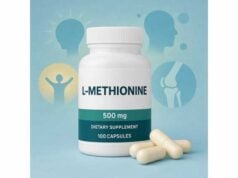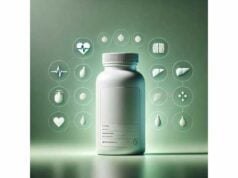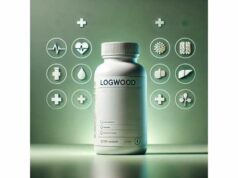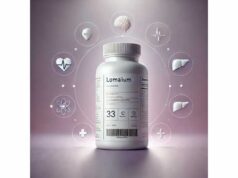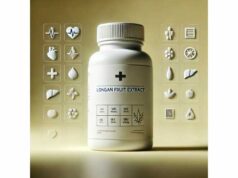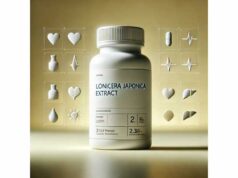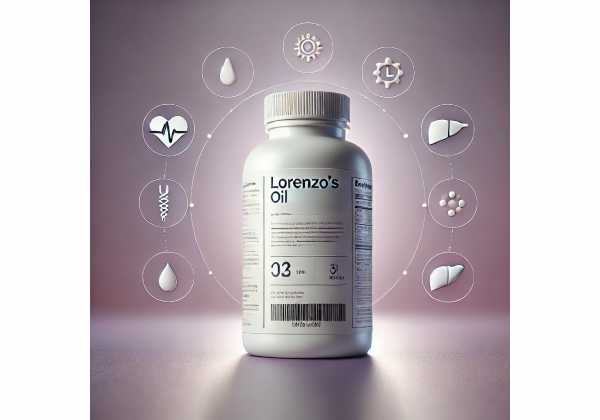
Lorenzo’s Oil is a specialized dietary therapy created for X-linked adrenoleukodystrophy (X-ALD), a rare genetic disorder that causes very-long-chain fatty acids (VLCFAs) to accumulate in the brain, spinal cord, and adrenal glands. The oil is a 4:1 mixture of glyceryl trioleate (oleic acid) and glyceryl trierucate (erucic acid). Its central aim is to lower saturated VLCFAs—particularly C26:0—by competing with elongase pathways that synthesize these molecules. In practice, Lorenzo’s Oil is not a cure; it does not reverse established neurological damage. Its best-supported role is preventive, especially in asymptomatic boys with X-ALD and normal brain MRI, where sustained VLCFA lowering has been associated with a lower risk of developing the childhood cerebral form. This guide explains how the oil works, who is most likely to benefit, how to use and monitor it, realistic dosage ranges, safety guardrails, and how it fits alongside standard care such as MRI surveillance, adrenal management, hematopoietic stem-cell transplantation (HSCT), and gene therapy where appropriate.
Key Insights
- Proven biochemical effect: sustained reduction of plasma VLCFAs (notably C26:0); clinical prevention signal is strongest in asymptomatic boys with normal MRI.
- Composition matters: 4 parts trioleate to 1 part trierucate; the erucic component is critical for inhibiting VLCFA elongation.
- Practical dose range used in trials: 2–3 mL/kg/day orally, typically with a fat-restricted diet (≈10–15% of calories) and close lab monitoring.
- Safety caveat: common issues include reversible thrombocytopenia and mild liver-enzyme elevations; requires scheduled CBC and liver tests.
- Who should avoid: pregnancy and breastfeeding, people without confirmed ALD, and anyone lacking medical supervision and structured monitoring.
Table of Contents
- What is Lorenzo’s Oil?
- Does it work? Evidence-backed benefits
- How to use it day to day
- How much per day and how to monitor?
- Side effects, interactions, and who should avoid it
- Where it fits with HSCT, gene therapy, and diet
What is Lorenzo’s Oil?
Definition and composition
Lorenzo’s Oil is a 4:1 blend of glyceryl trioleate (trioleate, an oleic-acid triacylglycerol) and glyceryl trierucate (trierucate, an erucic-acid triacylglycerol). Both components are long-chain monounsaturated fats. Unlike typical culinary oils, this mixture is prepared to tight specifications and used as a medical food under specialist guidance.
Why it was developed
In X-ALD, mutations in ABCD1 impair peroxisomal import and degradation of VLCFAs, leading to accumulation—particularly hexacosanoic acid (C26:0)—that disrupts myelin and fuels neuroinflammation. The oil was designed to lower saturated VLCFAs by competing with fatty-acid elongation enzymes, thereby reducing endogenous production of C24:0 and C26:0. The erucic component appears to be especially important for inhibiting ELOVL1-mediated elongation—the pathway that generates saturated VLCFAs.
What it does (and does not) do
- Does: lower plasma VLCFA levels within weeks when paired with dietary fat restriction; in long-term follow-up of asymptomatic boys with normal MRI, sustained biochemical control correlated with lower risk of evolving to cerebral disease.
- Does not: repair established demyelination, reverse neurologic disability, or halt rapidly progressive cerebral ALD once MRI lesions are active. In adrenomyeloneuropathy (AMN), clinical benefit has generally been absent despite biochemical improvements.
Formulations and quality
The preparation is typically provided as a clear, neutral-tasting liquid for oral use. Quality points to look for include: validated 4:1 ratio, verified oleic/erucic content, oxidative stability data (peroxide/anisidine values), and contaminant testing (metals, solvents). Because monounsaturated oils can oxidize over time, proper storage—cool, dark, tightly capped—is essential.
Who typically receives it
- Asymptomatic boys with molecularly confirmed X-ALD, normal brain MRI, and elevated VLCFAs—often identified via newborn screening and family cascade testing.
- Selected adult carriers or AMN patients for biochemical control, though clinical gains are uncertain; decisions are individualized.
- It is not a general supplement and should never be used without confirmed diagnosis and specialist oversight.
Bottom line
Think of Lorenzo’s Oil as a targeted biochemical tool: best at lowering VLCFAs and possibly delaying cerebral conversion in young, asymptomatic patients with normal imaging—while not reversing existing neurological injury. It belongs in a structured care plan with regular imaging, endocrine follow-up, and timely escalation to definitive therapies when indicated.
Does it work? Evidence-backed benefits
Biochemical efficacy is consistent; clinical benefits depend on timing. The clearest, most reproducible effect is a reduction in plasma VLCFAs, often toward or into the reference range over ~4 weeks when the oil is combined with moderate dietary fat restriction. The clinical signal is strongest in asymptomatic boys who start early and sustain VLCFA control; it is weak to absent in symptomatic cerebral disease and largely negative in AMN.
1) Prevention signal in asymptomatic boys (normal MRI)
Long-term observational follow-up of boys started on the oil plus dietary measures showed that those achieving consistent C26:0 lowering experienced substantially lower risk of developing new MRI lesions over ~7 years of follow-up. The clinically useful translation: earlier is better, and biochemical control matters. Because these data come from single-arm cohorts (not placebo-controlled trials), shared decision-making is essential—but for families navigating a new X-ALD diagnosis with a normal MRI, this is a pragmatic option while MRI surveillance continues.
2) Symptomatic cerebral ALD
In established cerebral disease, especially once contrast-enhancing lesions and neurologic symptoms are present, dietary therapy does not halt progression. For these cases, the time-critical intervention with proven disease-modifying impact is allogeneic HSCT or, in selected centers and candidates, autologous lentiviral gene therapy. Lorenzo’s Oil may still be used for biochemical control, but families should not expect it to rescue neurologic function.
3) Adrenomyeloneuropathy (AMN) and adult phenotypes
Open-label trials in AMN did not show clinically meaningful improvements in neurologic endpoints despite reductions in VLCFA levels. Some clinicians still consider the oil for selected metabolic goals, but expectations should be conservative.
4) Mechanistic plausibility: why the mixture works
The oil’s monounsaturated triacylglycerols (oleic and erucic) compete with elongase enzymes (notably ELOVL1) that synthesize saturated VLCFAs. Experimental work has demonstrated ELOVL1 inhibition, aligning the biochemical effect (falling C26:0) with a direct molecular target. This mechanism explains why the erucic-rich component is essential and why dietary background fat influences outcomes.
5) Quality of life and functional measures
In asymptomatic boys, the benefit is risk reduction—preventing cerebral conversion is itself a major quality-of-life win. In symptomatic ALD/AMN, controlled trials have not documented functional gains, reinforcing that the oil is preventive/adjunctive, not restorative.
Takeaway
- Use the oil early (asymptomatic, normal MRI) to reduce risk while maintaining rigorous MRI surveillance.
- Avoid relying on the oil in established cerebral disease; expedite referral for HSCT/gene therapy evaluation.
- In AMN, do not expect clinical improvement; decisions focus on biochemical goals and individual preferences.
How to use it day to day
Team-based setup
Lorenzo’s Oil should be started and monitored by clinicians experienced in ALD—typically a metabolic neurologist with dietitian support. Before initiation, confirm ABCD1 status, document baseline VLCFAs (C26:0, C24:0/C22:0 ratios), complete CBC and liver enzymes, and ensure a baseline brain MRI (Loes score) in children and adults as appropriate.
Integrate diet from day one
Biochemical success relies on pairing the oil with a fat-restricted diet (commonly ~10–15% of total calories from fat). Families benefit from a clear plan that protects essential fatty acids (linoleic, alpha-linolenic) and overall growth. Real-world wins come from:
- Simple swaps: lean proteins, low-fat dairy, emphasis on grains/legumes/produce, using measured amounts of the oil as prescribed rather than ad libitum fats.
- Meal structure: set times help distribute the oil evenly across the day and reduce GI discomfort.
- Dietitian check-ins: brief, frequent coaching to troubleshoot compliance, palatability, and growth.
Practical dosing logistics
- The oil is taken orally, often mixed into food (e.g., smoothies, purees) or measured with a syringe/cup.
- Divide the daily total into 2–3 servings to improve tolerance.
- Store tightly capped in a cool, dark place; avoid heating. If available, choose lots with recent oxidation testing.
Monitoring calendar (typical pattern)
- Every 1–3 months initially: VLCFAs, CBC (platelets), AST/ALT, and clinical check for bruising, fatigue, or GI changes.
- MRI surveillance: per consensus recommendations—commonly every 6 months in early childhood, then spaced with age and risk; increase frequency if biochemical control slips or symptoms arise.
- Endocrine: adrenal function testing and stress-dose education are separate but essential parts of ALD care.
Troubleshooting common issues
- Platelets trending down: pause or reduce dose; reassess in collaboration with the care team.
- Mild ALT/AST rise: recheck, consider dose adjustment and rule out other causes.
- Poor palatability/compliance: switch to smaller, more frequent doses; blend into familiar foods.
- Stalled VLCFA response: review dietary fat intake, confirm accurate dosing, and check product quality.
Family-centered tips
- Keep a one-page log (dose, timing, meals, any symptoms).
- Plan ahead for school or travel with labeled syringes or measured containers.
- Align dose times with daily routines to reduce decision fatigue.
How much per day and how to monitor?
There is no universal, one-size dose. Most clinical programs individualize dosing based on body weight, tolerance, lab response, and dietary intake. A practical, literature-aligned starting framework is:
Adult and pediatric starting ranges
- Asymptomatic boys with X-ALD (normal MRI): 2–3 mL/kg/day orally, split 2–3 times daily, paired with ~10–15% of total calories from other dietary fats.
- Adolescents/adults: by weight, typically in the same 2–3 mL/kg/day range when chosen, with attention to total caloric load and GI tolerance.
Titration plan
- Week 0 (baseline): CBC with platelets, AST/ALT, VLCFAs; confirm MRI status and diet plan.
- Weeks 2–4: check CBC, AST/ALT, and VLCFAs to ensure downward trajectory of C26:0.
- Months 2–3: if target VLCFA reduction is not reached, verify diet, increase toward the upper range, or adjust split dosing.
- Ongoing: once stable, labs every 8–12 weeks; MRI per age-risk protocol.
How “success” is judged
- Biochemical: sustained reduction in plasma C26:0 and related ratios toward reference ranges.
- Clinical (asymptomatic): continued normal MRI and absence of neurologic signs.
- Clinical (symptomatic): expect no reversal; the oil’s role is limited, and disease-modifying therapies should be prioritized.
What influences dose decisions
- Dietary fat intake: higher background fat can blunt the effect; tightening to 10–15% calories often improves responsiveness.
- Adverse effects: falling platelets or rising transaminases mandate dose reduction or pause, with re-challenge if benefits outweigh risks.
- Growth and energy needs (children): never compromise calories or essential fatty acids; dietitians adjust menus to keep nutrition adequate.
Special cases
- Adrenal insufficiency: the oil does not treat adrenal failure; hydrocortisone replacement and stress-dosing plans proceed independently.
- Co-therapies: DHA or other lipids may be considered in specific protocols but should not be added casually; coordinate with the specialist team.
Key monitoring labs
- VLCFAs (C26:0; C24:0/C22:0; C26:0/C22:0)
- CBC with platelets
- AST/ALT (± alkaline phosphatase, bilirubin)
- Lipid panel (contextual)
When to stop or switch strategy
- Lack of biochemical response despite strong adherence and dose optimization.
- New MRI lesion(s) or neurologic decline: escalate to HSCT/gene therapy evaluation; do not delay on the basis of dietary therapy.
Side effects, interactions, and who should avoid it
Overall safety profile
When supervised and monitored, Lorenzo’s Oil is generally well tolerated. The most frequent issues are reversible laboratory changes rather than severe clinical events.
Common or notable effects
- Thrombocytopenia (low platelets): occurs in a meaningful minority; usually moderate and reversible with dose adjustment or brief interruption. Watch for bruising or nosebleeds; schedule regular CBCs.
- Mild liver-enzyme elevations: monitor AST/ALT; typically transient and asymptomatic.
- Gastrointestinal symptoms: nausea, abdominal discomfort, or loose stools, often improved by dividing doses, taking with food, or slowing dose increases.
- Weight/caloric issues: because the oil adds substantial calories, dietitians balance energy needs with fat restriction to avoid weight gain or inadequate essential fatty acids.
Less common concerns
- Erucic acid and myocardium: very high erucic-acid intake produced myocardial lipid accumulation in animal studies from older rapeseed oils; such effects have not been a consistent clinical finding at medical doses under monitoring, but this underlines the need for structured dosing.
- Allergy/intolerance: rare with refined oils; discontinue if rash, wheeze, or angioedema occurs.
Drug and supplement interactions
- Antiplatelet/anticoagulant agents: concurrent use may compound bleeding risk if platelets fall; coordinate with the prescriber and monitor.
- Hepatotoxic drugs: additive liver-enzyme elevations are possible; schedule labs and consider spacing interventions.
- Other high-fat supplements: can confound the fat-restriction target; disclose all oils/fats (including MCTs, fish oil) to your team.
Who should avoid
- Pregnancy and breastfeeding: avoid due to insufficient safety data and erucic-acid exposure concerns.
- Individuals without confirmed ALD: this is not a general wellness oil.
- Those unable to access monitoring (labs/MRI/dietetic support): safe and effective use hinges on structured follow-up.
- Active cerebral ALD in place of disease-modifying therapy: do not use the oil as a substitute for HSCT or gene therapy when indicated.
When to seek care urgently
- Unusual bruising or bleeding, persistent abdominal pain, jaundice, marked fatigue, or any new neurologic symptoms (vision, behavior, gait, cognition).
- Fever or rapid neurologic change in a child with ALD—contact the specialist team immediately.
Practical safety habits
- Keep a dose and symptom diary; bring it to visits.
- Do not change dose or stop abruptly without discussing with your team unless a clinician advises immediate hold for safety.
- Refresh the supply regularly and store properly to minimize oxidation.
Where it fits with HSCT, gene therapy, and diet
The modern ALD toolbox is broader than when Lorenzo’s Oil was introduced. Understanding where the oil belongs helps families make timely, informed choices.
1) MRI surveillance and early action
For boys identified through newborn screening or family testing, periodic brain MRI is the single most important surveillance tool. If early cerebral lesions emerge (typically parieto-occipital white matter with enhancement), rapid referral for allogeneic HSCT evaluation is the priority. Lorenzo’s Oil may continue for biochemical control, but transplant timing determines outcomes.
2) Hematopoietic stem-cell transplantation (HSCT)
HSCT is the treatment of choice for early childhood cerebral ALD in many consensus pathways. It halts inflammatory demyelination if performed early enough but does not fix adrenal insufficiency or reverse established deficits. Families should understand transplant logistics, donor options (matched related/unrelated, cord blood), and risks (GVHD, infection). The oil is adjunctive, not an alternative, in this context.
3) Gene therapy (elivaldogene autotemcel, where available)
Autologous lentiviral gene therapy has regulatory approval in some regions for early, active cerebral ALD in patients lacking a suitable donor. It avoids GVHD but carries serious risks, including a documented risk of hematologic malignancy that now appears in prescribing information. Decisions are individualized, weighing center expertise, eligibility, and evolving safety data. The oil does not replace gene therapy when criteria are met.
4) Diet beyond the oil
A VLCFA-aware diet complements therapy by limiting exogenous VLCFAs and adjusting fat down to ~10–15% of energy while protecting essential fatty acids and growth. Families often need recurring, pragmatic nutrition coaching to sustain adherence. The oil counts toward the day’s fat allotment; other fats should be measured rather than guessed.
5) Endocrine care
Up to 80% of affected males develop primary adrenal insufficiency. Hydrocortisone replacement, stress-dose education, and sick-day rules are pillars of safety. Lorenzo’s Oil does not correct adrenal failure and should never delay endocrine evaluation.
6) Adult phenotypes and carriers
Adults with AMN experience progressive myelopathy. Evidence does not support the oil as a disease-modifying therapy in AMN; focus on rehabilitation, spasticity/pain management, and surveillance for cerebral conversion and adrenal insufficiency. Female carriers may have milder myelopathy; the oil is generally not routine in carriers outside research settings.
Putting it all together
- Asymptomatic, normal MRI: consider oil + diet for biochemical control while maintaining strict MRI surveillance.
- Early cerebral lesions: expedite HSCT/gene therapy evaluation—time is brain.
- AMN/adults: prioritize symptom management and surveillance; oil use is individualized with modest expectations.
References
- Follow-up of 89 asymptomatic patients with adrenoleukodystrophy treated with Lorenzo’s oil 2005 (Observational Cohort)
- Lorenzo’s oil inhibits ELOVL1 and lowers the level of sphingomyelin with saturated very long-chain fatty acids in cultured cells and in mice 2014 (Mechanistic Study)
- International recommendations for the diagnosis and management of patients with adrenoleukodystrophy: a consensus-based approach 2022 (Guideline)
- X-Linked Adrenoleukodystrophy 2023 (GeneReviews)
- Etiology and treatment of adrenoleukodystrophy: new insights from ABCD1 knockout mice 2018 (Translational Review)
Medical Disclaimer
This article is for educational purposes only and does not replace personalized medical advice, diagnosis, or treatment. Lorenzo’s Oil should be considered only within a confirmed diagnosis of X-ALD and under specialist supervision with structured lab and MRI monitoring. Do not delay evaluation for allogeneic HSCT or gene therapy if early cerebral disease is detected. If you experience unusual bruising, jaundice, persistent abdominal pain, or any new neurologic symptoms, seek medical care immediately.
If this guide was helpful, please consider sharing it on Facebook, X (formerly Twitter), or any platform you prefer, and follow us for future evidence-based updates. Your support helps us continue producing high-quality, independent content.

